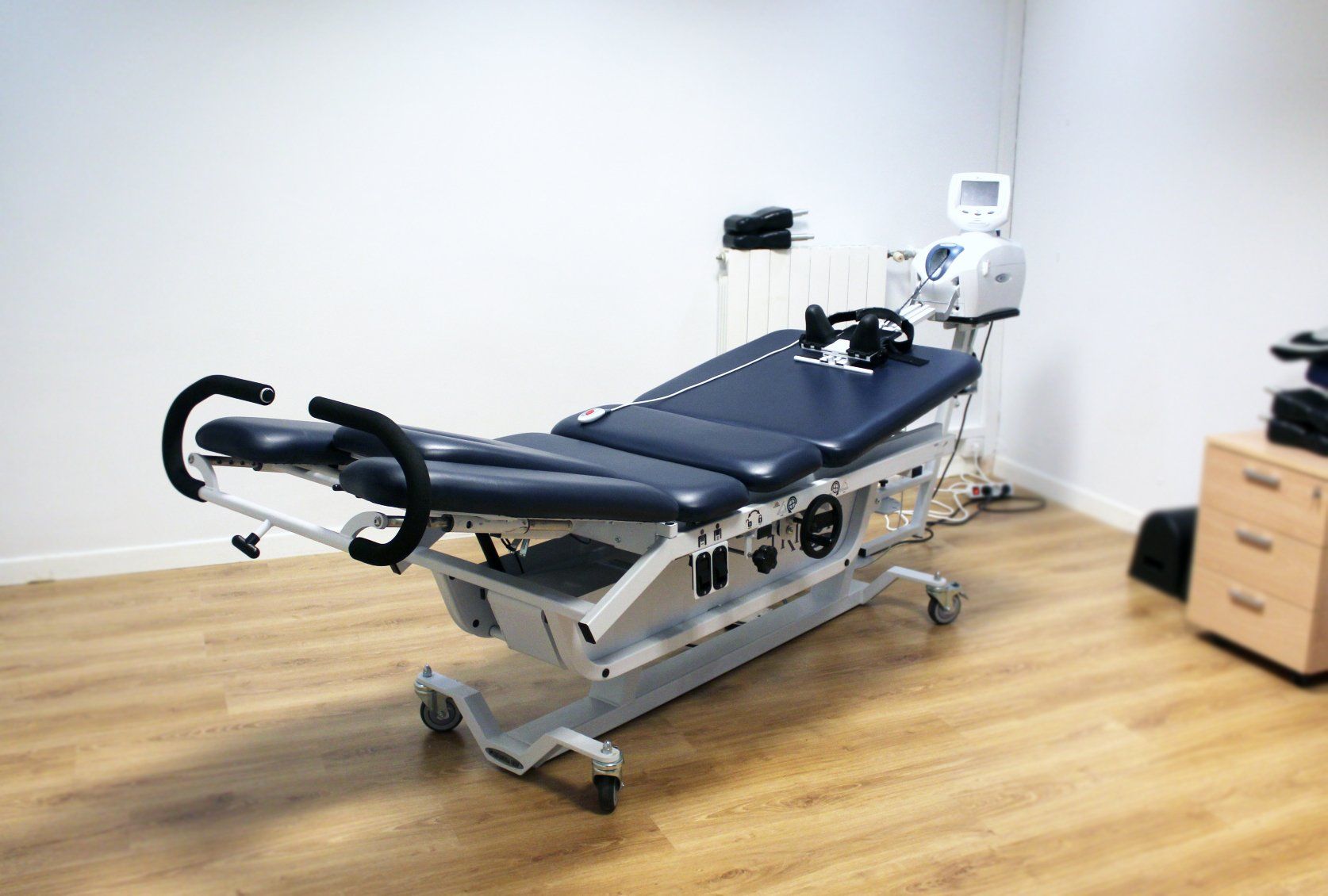Axial vertebral decompression
Axial vertebral decompression is indicated to treat herniated discs without surgery.
What is vertebral axial decompression?
Axial vertebral decompression is a novel non-invasive medical treatment system.
Unlike conventional tractions, using a computerized table allows for painless, increased intervertebral space through distraction. Negative pressure (vacuum) is created, which facilitates the reabsorption of herniated discs, relieves compression on the nerve roots, separates the impacted joint surfaces, and stretches the contracted muscles. This reduces pain.
How long does a vertebral axial decompression session last?
The session lasts between 25 and 30 minutes and is supervised by a physical therapist. It begins with a distraction strength calculated according to each person's physical condition, and this strength is increased with each session, creating a cumulative effect (always respecting physiological strength ranges).
The frequency of sessions will be determined by the nature of the problem being treated, although typically 2 or 3 sessions per week are performed, up to a total of 12 sessions over 4 weeks. The treatment is described as safe and painless.
How is a vertebral axial decompression performed?
Tanto para el procedimiento lumbar como el cervical el paciente se encuentra vestido y acostado sobre la camilla de descompresión, asegura la sujeción mediante diferentes sistemas de arnés para garantizar una descompresión controlada. Un avanzado sistema computarizado controla la tensión de distracción, los tiempos de pausa y desarrollo de la sesión plasmándolos en una gráfica.
Axial decompression can be associated with physiotherapy sessions and/or ozone therapy sessions.
It is recommended to perform progressive muscle retraining at the end of treatment and to perform refresher sessions after a few months.
¿Qué problemas de columna se tratan con descompresiones axiales?
An anatomically and structurally stable spine is required to ensure the safety of the treatment. Therefore, it is essential to conduct a medical and physical therapy evaluation before starting treatment to determine whether a person is suitable for treatment.
- Hernia discal lumbar
- Hernia discal cervical
- Sciatic radiculopathy
- Canal stenosis
- Facet syndrome
¿En que casos no se recomienda la descompresión axial vertebral?
- Pathological lesions or congenital malformations that alter the integrity and stability of vertebral structures.
- Neoplasia
- Spina bifida
- Spondylolisthesis from grade 2 onwards
- Osteoporosis with more than 45% bone loss
- Pregnant women
- Children under 15 years old
- Fractures
We can help you with your spine problem
Solicita hoy tu consulta online gratuita para valorar tu caso.
💡 Remember: For more advanced treatments, you may need to visit one of our clinics in Spain.




